Billie Holiday What Was Billie Holiday Art Communicated to
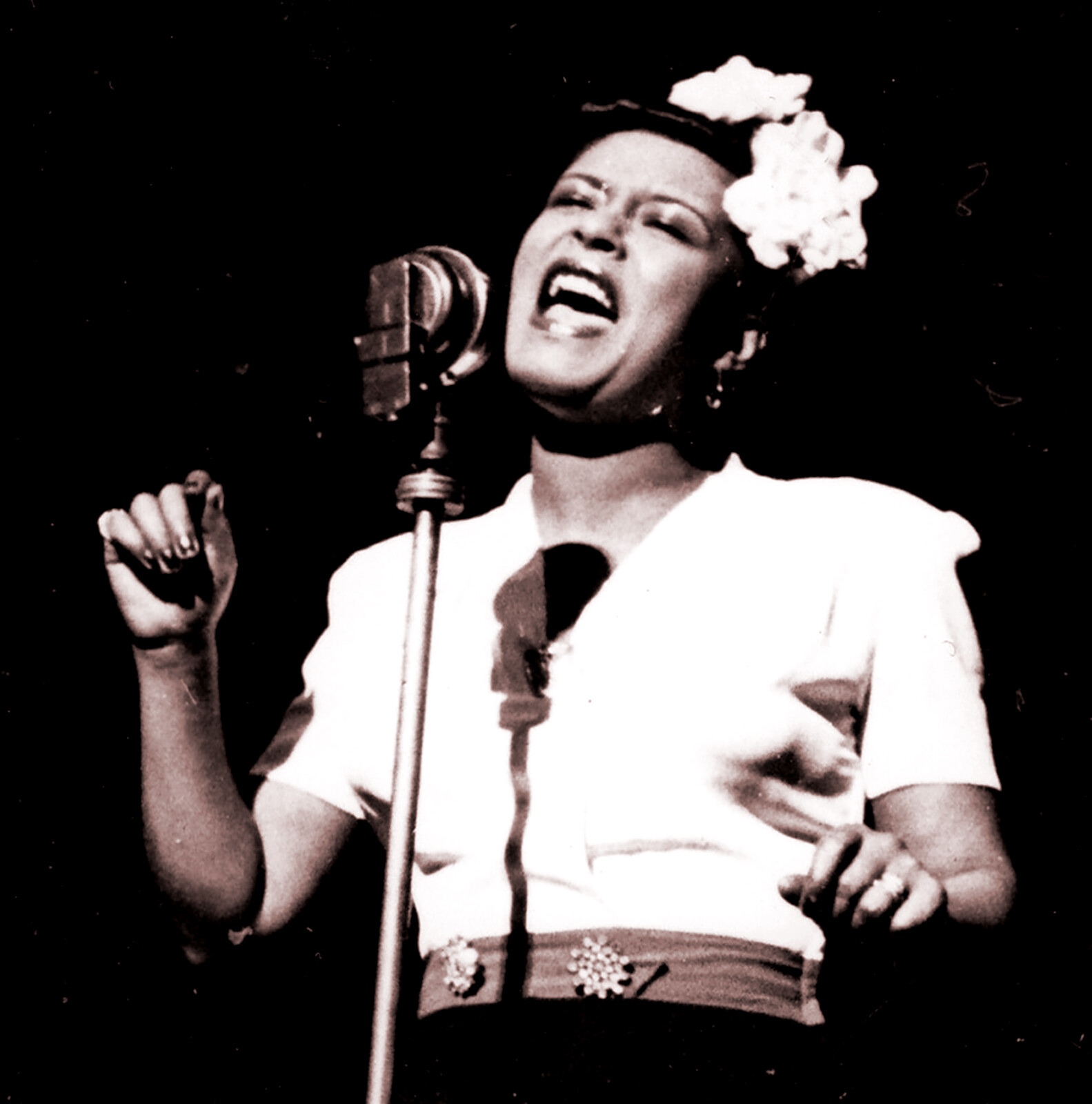 For Jazz vocalist Billie Holiday the 1930s was a time of emergence. She was a trivial astonished to observe the effect her singing had. In the early years she sang generally Ballads and Tin can Pan Aisle songs.
For Jazz vocalist Billie Holiday the 1930s was a time of emergence. She was a trivial astonished to observe the effect her singing had. In the early years she sang generally Ballads and Tin can Pan Aisle songs.
This profile of Billie Holiday recaps the basic outline of her story in three chapters roofing the 1930s, 1940s and 1950s. Holiday is quoted from interviews and her famed autobiography, Lady Sings the Blues. This is also a photograph essay presenting her constantly shifting visage.
'Like I'm playing a horn'
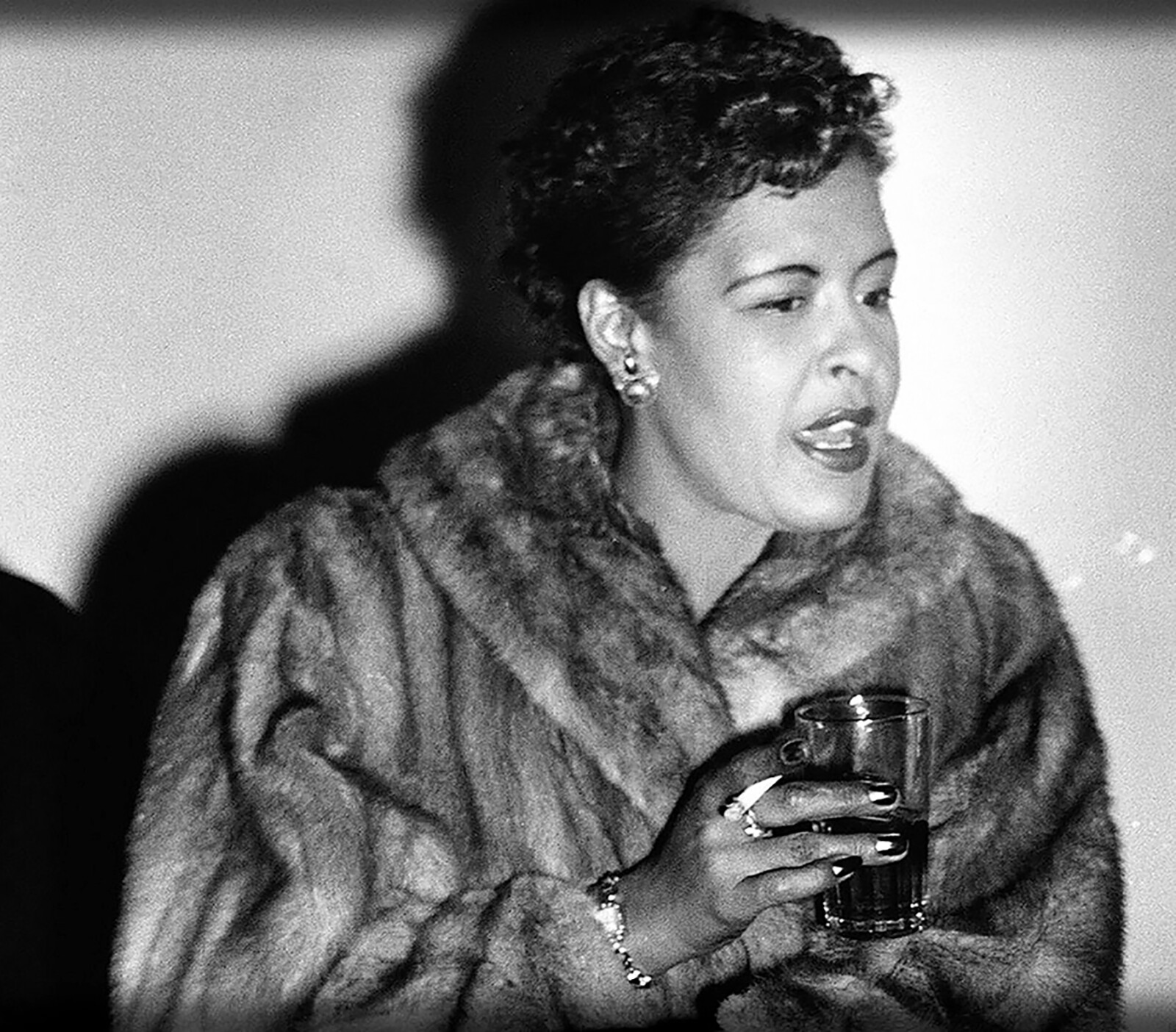 Information technology'due south not an exaggeration to call Billie Holiday (Eleanora Fagan, 1915-59) the best of all jazz singers. She fused Jazz and Popular music profoundly impacting the art of song and all subsequent singers.
Information technology'due south not an exaggeration to call Billie Holiday (Eleanora Fagan, 1915-59) the best of all jazz singers. She fused Jazz and Popular music profoundly impacting the art of song and all subsequent singers.
Billie sang intuitively, becoming "the foremost female singer in jazz history" co-ordinate to The Grove Dictionary of Jazz . The entry on Holiday past James Lincoln Collier asserts that her recordings of 1935-45:
". . . institute a major trunk of jazz music. . . More than nearly any other singer, Holiday phrased her performances in the manner of a jazz instrumental soloist, and accordingly she has to be seen as a complete jazz musician, not only a singer."
Using her vocalisation expressively Holiday bent notes like a horn player bravado along with the cats. Holiday revised songs for the amend in her personal interpretation, edifice ane of the most distinctive personal singing styles of Twentieth Century music.
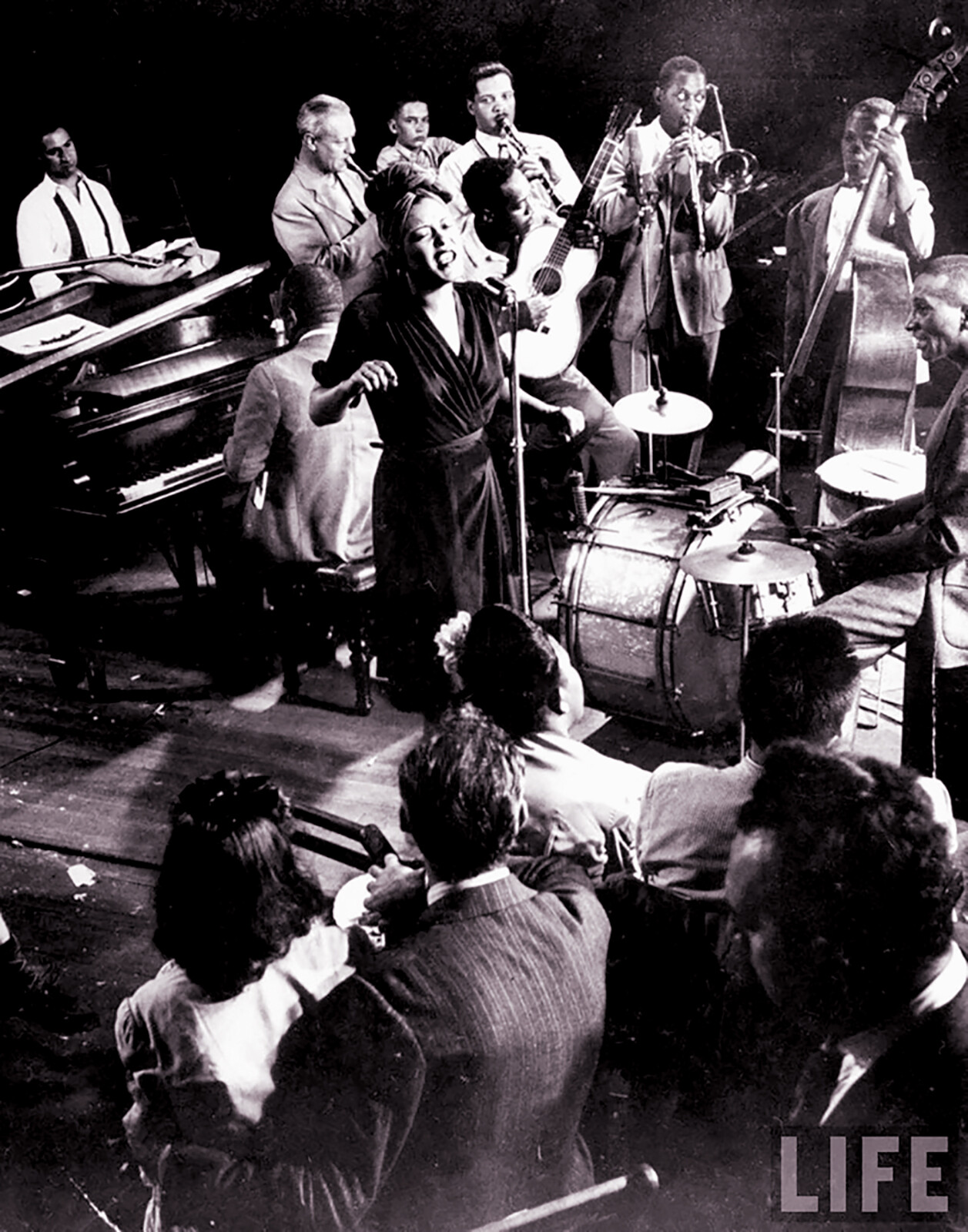
The Jazz Vocalizer
Though she evoked a feeling of the Blues and made use of Blues tonality, Holiday was primarily a Jazz vocalizer. She sang very few actual Blues numbers, especially in the early years.
Like Louis Armstrong and the best Jazz singers, she transformed and improved songs. Many were forever reshaped by or might accept been forgotten relieve for her interpretation.
Her ability to communicate a broad range of nuanced emotions, transcended the grade of popular song, developing a worldwide post-obit. "I don't think I'one thousand singing," she wrote in her memoir:
"I feel like I'm playing a horn. I try to improvise similar Lester Young, similar Louis Armstrong, or someone else I admire. What comes out is what I feel. I hate straight singing. I have to alter a melody to my own way of doing it. That's all I know."
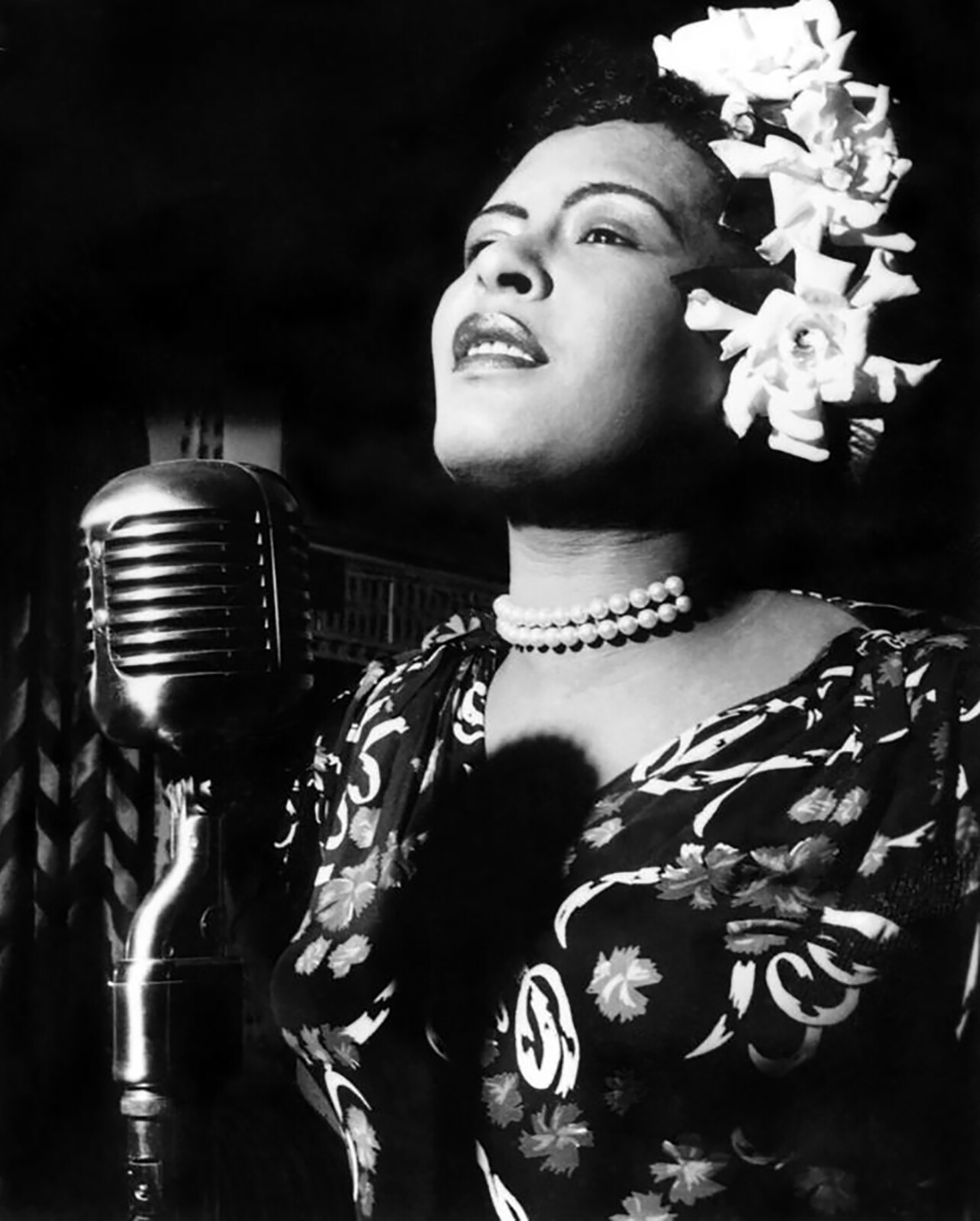
A Tough Cookie
Holiday claimed to have named herself after actress Billie Dove in one of several contradicting explanations. But there was more to it:
"My father had started calling me Bill considering I was such a young tomboy. I didn't mind that, but I wanted to exist pretty too, and have a pretty proper noun. So I decided Billie was information technology and I made information technology stick."
Tomboy indeed. In dissimilarity to her elegant vox and glamorous public prototype, Billie was quick to anger and could be downright threatening. Her linguistic communication was salty. She swore like a sailor, nevertheless she could be quite charming, pocket-sized, even demure.
Early Sessions
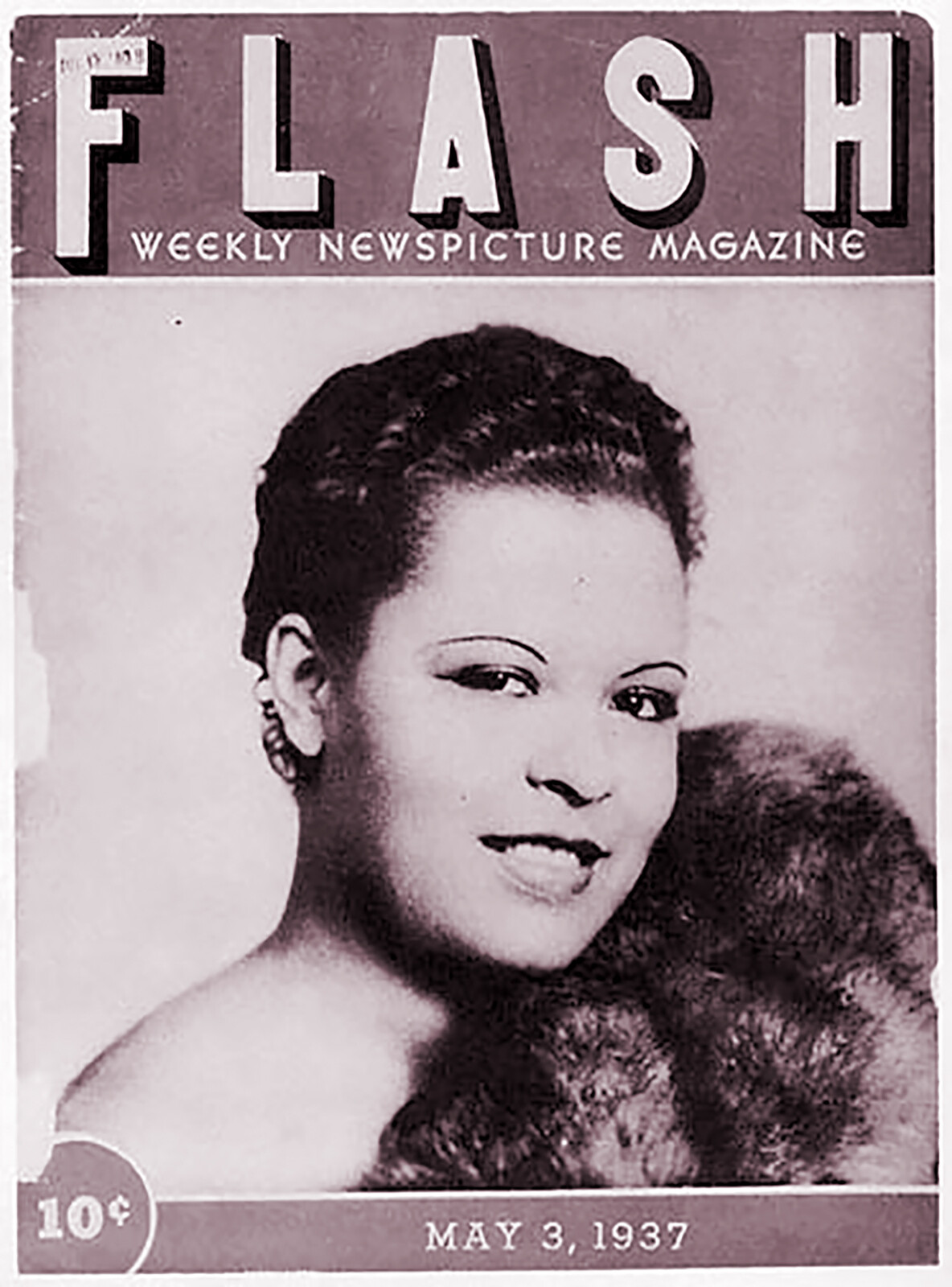
Starting in 1936 Holiday fabricated a series of sessions under her own proper name with clarinetist Benny Goodman, pianist Teddy Wilson, trumpeter Bunny Berigan and personnel on loan from the Basie bands. Among her favorites in those sessions were trumpeter Buck Clayton and tenor saxophonist Lester Young.
A popular and critical success, her discs sold well. It'south prophylactic to say that her singing reshaped the art of song and the relation between singer and songwriter, condign co-composer after the fact. She brought a special lilt to songs that might easily have been otherwise forgotten.
Songs were forever altered by the poignancy of her renditions, such as "What a Little Moonlight Can Exercise," "Them There Optics and "This Years Kisses." Ofttimes rushed studio conditions forced her to record music first seen just moments before, "When I did 'Dark and Day' hey, I'd never seen that song earlier in my life."
With Saxophonist Lester Young
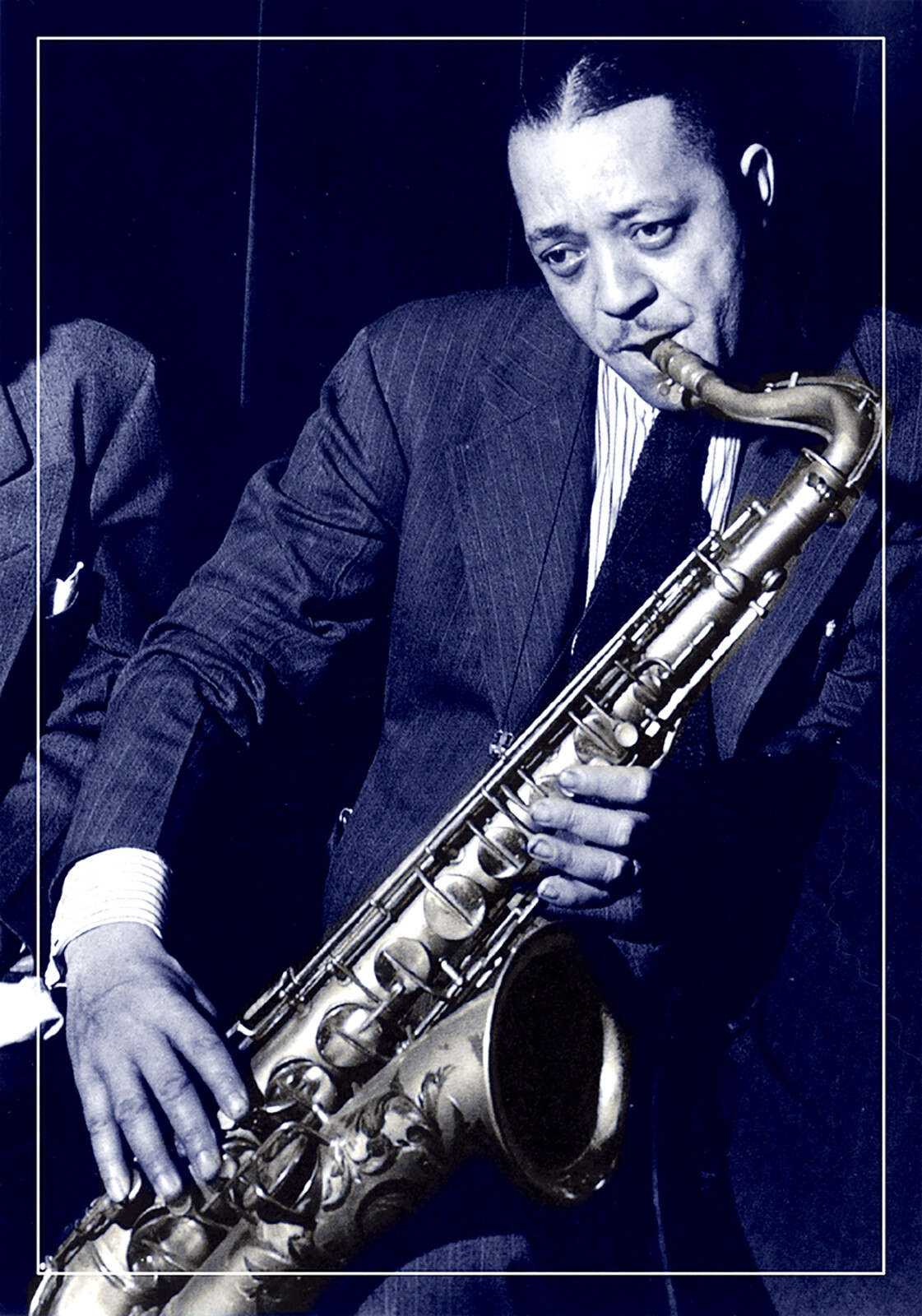
In that location's been much annotate most the remarkable musical synergy between Holiday and saxophonist Lester Young (1909-1959). They formed a brilliant partnership fusing singer and accompanist into a unified melodic and tonal instrument.
A quirk of Lester's odd spoken language patterns was addressing his acquaintances formally as "Lady." His sobriquet "Lady Twenty-four hours" stuck to Vacation, who returned the compliment:
"When it came to a name for Lester Young, I always felt he was the greatest. The greatest human effectually then was Franklin D. Roosevelt and he was the President. So I started calling Lester the President. It got shortened to 'Prez,' but it however means what it was meant to mean — the meridian homo in this country."
From Singer to Songwriter
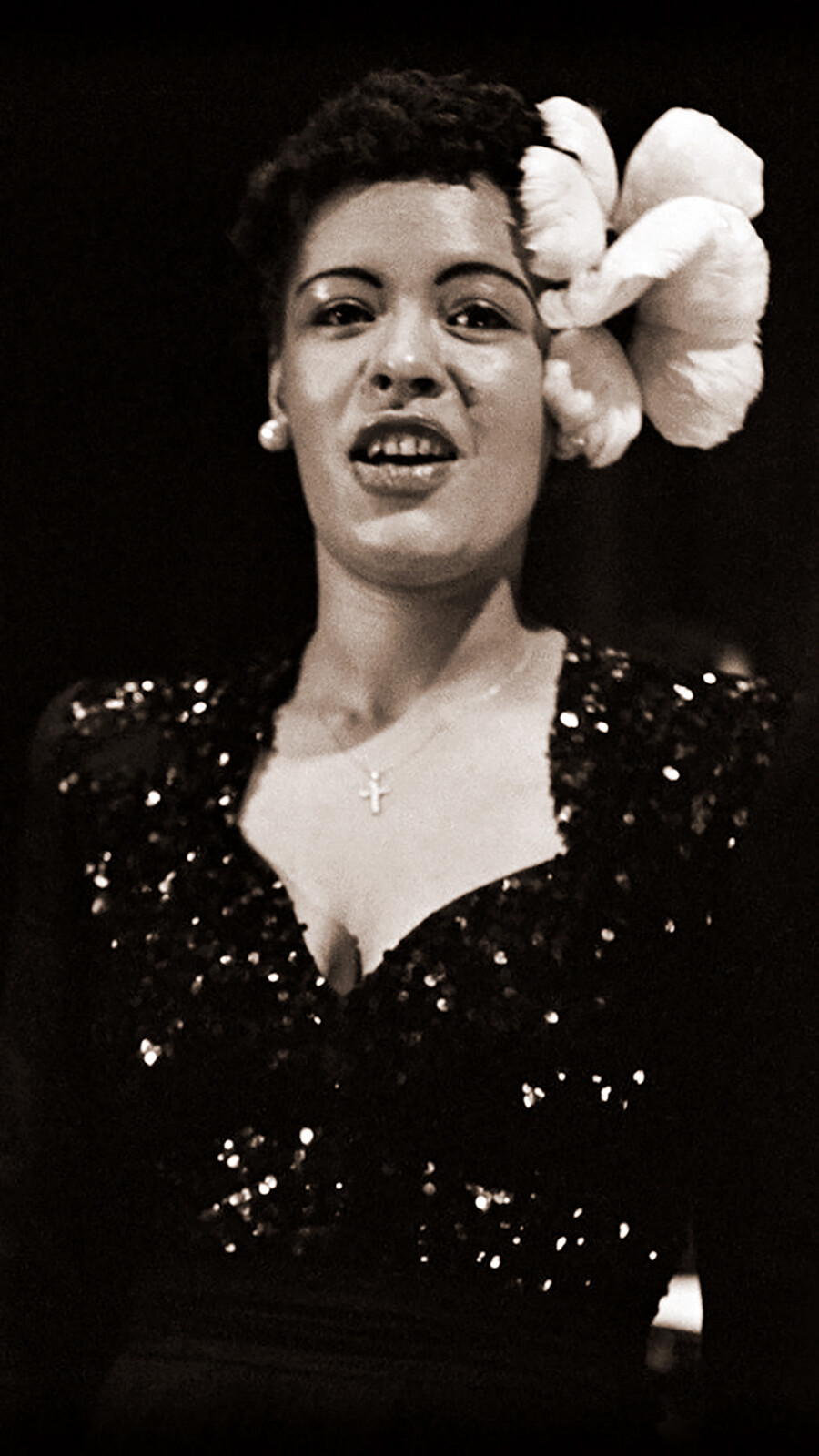 Through the 1930s Holiday was recording mainly popular ballads and Can Pan Alley songs. Yet her vocal renditions were equivalent to the work of Louis Armstrong, Bessie Smith or Frank Sinatra, radically revising, modifying and improving the melodic and rhythmic elements, detaching her line from the regular crush and stretching or condensing the melodic figures.
Through the 1930s Holiday was recording mainly popular ballads and Can Pan Alley songs. Yet her vocal renditions were equivalent to the work of Louis Armstrong, Bessie Smith or Frank Sinatra, radically revising, modifying and improving the melodic and rhythmic elements, detaching her line from the regular crush and stretching or condensing the melodic figures.
Billie also wrote or co-composed several very proficient songs. They became some of her biggest hits: "Fine and Mellow" (1937), "God Anoint the Child" (1941) and "Lady Sings the Dejection" (1956).
'Cat Eyes' Buck Clayton
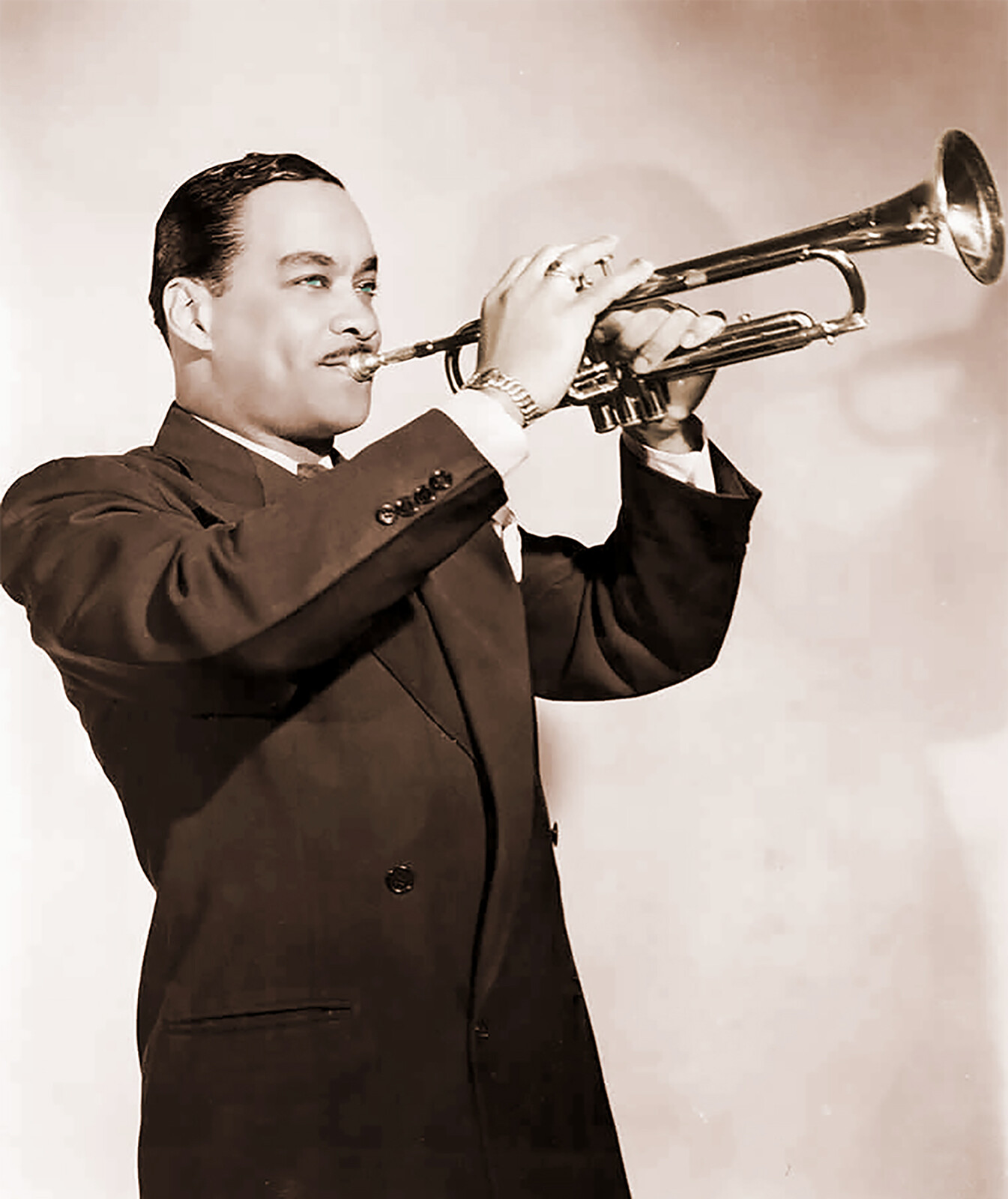
During her short stint with the Count Basie Orchestra, Vacation became very shut to Jazz trumpet thespian Cadet Clayton (1911-1991). Buck, Billie and Lester became skilful buddies. Buck and Prez remained her preferred partners and accompanists.
Holiday and Clayton had a musical love affair, and almost certainly more. His impeccable accessory on her best sessions was sensitive and intimate. He shared addicted recollections of working with her in his memoir, Cadet Clayton'south Jazz World (1986):
"Such pleasure I had backing up Billie's songs to her vocals. When she would record I would watch her mouth and when I saw she was going to have a breath or something I knew it was time for me to play between her expressions. It's what we phone call 'filling up the windows.'
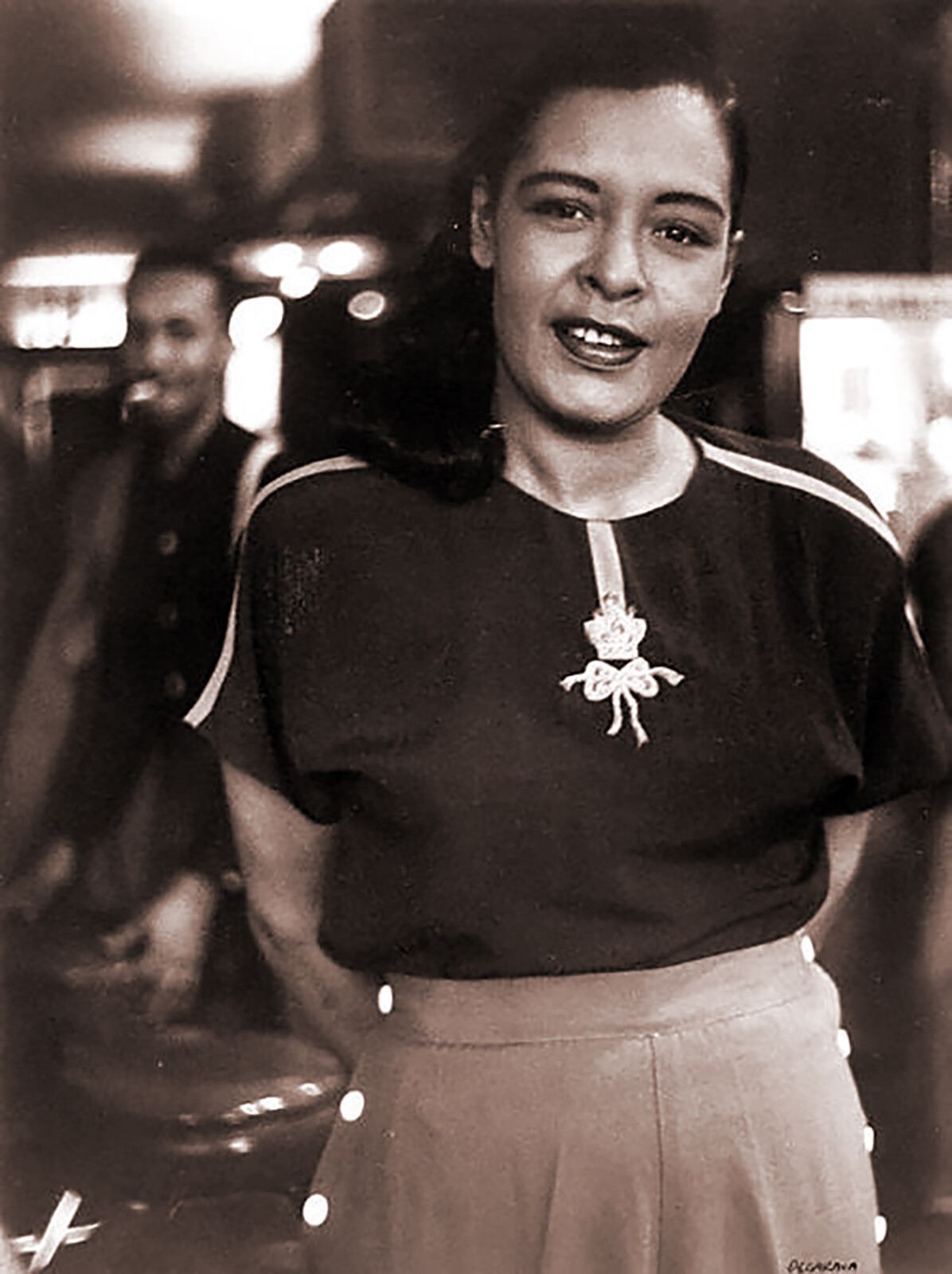
Autobiography as History
Autobiography and memoir offering us the actual words of an artist, their outlook and vocalisation. But as historical documents they must exist scrutinized with skepticism and corroborated with other research and data. The essential facts of Lady Sings the Blues take been confirmed by research.
Nonetheless Billie'south publisher and ghost writer were eager to emphasize the lurid and sensational: her babyhood abandonment, underage sex piece of work and drug habit. In co-ordination with publisher Doubleday and Company, dramatic excerpts were read past a narrator at her prominent 1956 Carnegie Hall concert.
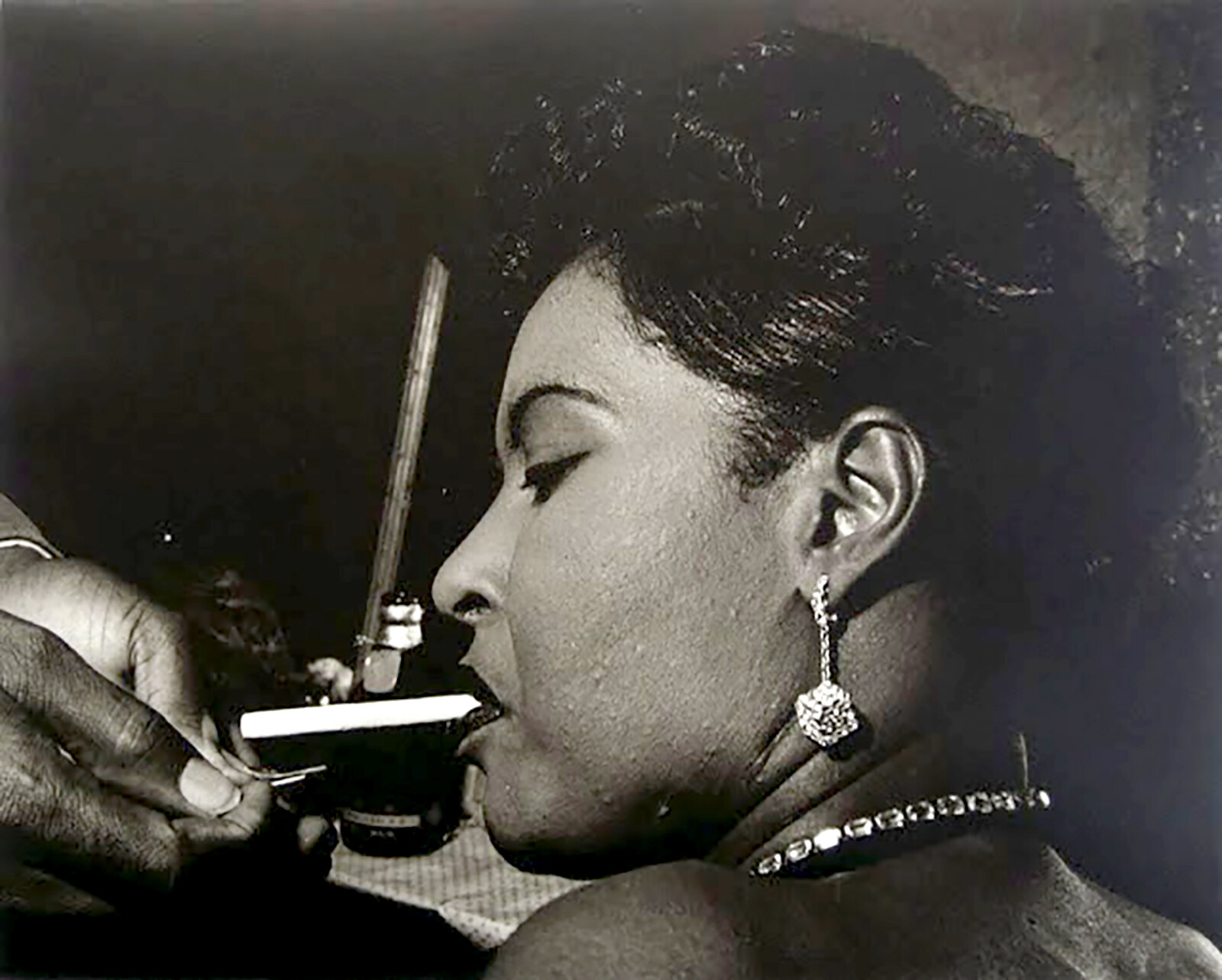
Diva Rising
By the end of the 1930s her record sales were high and artistry blossoming. As the 1940s dawned Billie Vacation's career was on the rising.
She was turning from Tin Pan Alley toward dark ballads, Dejection and her own striking originals. Stepping into the limelight and onto the world stage she was an artiste prepared to express herself on a broader sheet every bit depicted in part ii.
Sources, Extras and more:
Billie is quoted from her autobiographical memoir, Lady Sings the Blues , (Billie Holiday with William Dufty, Doubleday, 1956).
In the clips read by Kitt Weagant. Cadet Clayton was quoted from Buck Clayton's Jazz World (Oxford University Printing, 1986) and was read by Joe Hughes. The words of Artie Shaw were read by Peter Coyote.
Billie Holiday in the 1930s 1A
Big Metropolis Dejection, Your Mother'south Son in Law, That's Life I Approximate, No Regrets, Moanin' Depression
Billie Holiday in the 1930s 1B
Mean to Me, Swing It Brother, Swing, He'due south Funny that Mode, Without Your Beloved, I'll Never exist the Same
Billie Vacation in the 1930s 1C
Any Old Time, The Very Idea of You, All of Me, My Man
Find more photos, text and the complete radio programs at the Billie Vacation page of the Jazz Rhythm website.
Billie Holiday Contour in Jazz by Scott Yanow
The History Behind "The Us vs. Billie Holiday by Steve Proviser
Buck Clayton's Jazz Globe, Pt. 1 by Dave Radlauer
![]()
David Radlauer
Dave Radlauer is a six-fourth dimension honour-winning radio broadcaster presenting early Jazz since 1982. His vast JAZZ RHYTHM website is a compendium of early on jazz history and photos with some 500 hours of exclusive music, broadcasts, interviews and audio rarities.
Radlauer is focused on telling the story of San Francisco Bay Area Revival Jazz. Preserving the memory of local legends, he is compiling, digitizing, interpreting and publishing their personal libraries of music, images, papers and ephemera to exist conserved in the Dave Radlauer Jazz Collection at the Stanford University Library archives.
-
David Radlauer
https://syncopatedtimes.com/writer/dradjzz/
-
David Radlauer
https://syncopatedtimes.com/author/dradjzz/
-
David Radlauer
https://syncopatedtimes.com/author/dradjzz/
-
David Radlauer
https://syncopatedtimes.com/author/dradjzz/
Source: https://syncopatedtimes.com/the-real-billie-holiday-part-one-1930s/
Post a Comment for "Billie Holiday What Was Billie Holiday Art Communicated to"